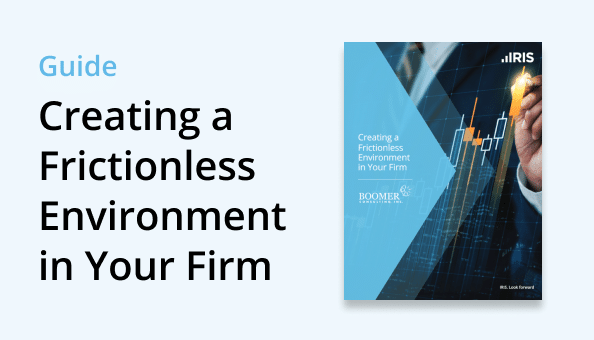BLOGS
Taxable Fringe Benefits & Including Them on W-2s

Whether you’re seeking to revamp your benefits and perks offerings to employees, or preparing tax forms to ensure accurate reporting, it’s essential to understand which fringe benefits are taxable and how they should be applied to employee W-2s.
To help you bypass benefits-related issues during tax season, we’ll explore which fringe benefits are a legal requirement, which optional benefits are taxable, and how to manage W-2s to guarantee legal compliance and convenience for you and your employees.
Defining Fringe Benefits & Legal Requirements
Fringe benefits are forms of compensation that fall outside of an employee’s typical pay rate. These benefits usually manifest as services, cash, cash equivalents, or property – everything from life insurance to personal use of a company vehicle. In most cases, fringe benefits are considered taxable, supplemental income for an employee and must be calculated on an employee’s W-2.
Some fringe benefits are regulated by federal and state laws, and employer requirements vary based on business size, including the number of full-time employees in a given workforce. In many cases, employers are required by law to offer workers’ compensation, family & medical leave, health insurance, and unemployment insurance. Of course, these requirements vary based on local, state, and federal laws, so it’s important to work with qualified HR consultants who can help you determine best practices. For example, the type of employer-sponsored health insurance that must be offered or the amount of workers’ compensation that must be available to employees will differ across various jurisdictions.
Which Benefits Are Taxable?
Employers and employees should understand which benefits are taxable and subject to federal withholding and FICA (Social Security and Medicare) taxes. In most cases, the FMV (fair market value) of any fringe benefit can be included in an employee’s gross income and reflected on their W-2, including withheld taxes.
Outside of those required by federal or state law, some of the most common taxable fringe benefits include:
- Payments for moving expenses beyond actual documented expenses; actual documented moving costs are nontaxable
- Employee bonuses
- Fair market value (FMV) of any personal use of an employer-provided vehicle; work-related use of a company car, however, is non-taxable.
- Group term life insurance that exceeds $50,000 per employee; group term life insurance up to the $50,000 per employee threshold is nontaxable.
- Any business-related frequent flyer miles that are converted to cash are taxable; business frequent flyer miles that are eventually used for personal travel, however, are nontaxable.
- Off-site gym or health club membership; if the company offers an on-site gym or athletic facility that is regularly accessible to employees, this is non-taxable.
- Vacation expenses
Employers should bear in mind that a fair number of fringe benefits are nontaxable and are thus excluded from federal income withholding, as well as FICA and FUTA taxes. Generally speaking, nontaxable fringe benefits should not be reported on an employee’s Form W-2 or affect gross income calculation.
Nontaxable benefits can include “de minimis” benefits like small, non-cash gifts (gift cards) given during the holidays or at company events; facilitating access to low-cost entertainment events is also considered nontaxable. On a broader scale, commuting/transportation benefits, employee discounts, retirement planning services, tuition reduction offers, profit-sharing plans, and adoption assistance programs are all considered nontaxable. For a more comprehensive list of nontaxable fringe benefits, please review the IRS’ guidelines.
Employer Tax Preparation and Special Considerations
Although employer reporting requirements vary based on the category of employee you’re paying (full-time, contractor, or otherwise), taxable fringe benefits paid to your employee should be included in the employee’s yearly Form W-2.
Each year, updates to tax and reporting regulations impact specific categories of fringe benefits, exclusions, or certain business structures, such as S corporations. In addition to the most common fringe benefits like workers’ compensation, unemployment insurance, and health plans, we’ll explore some other special considerations that impact fringe benefits and employer reporting best practices.
For employers who offer dependent care assistance, it’s necessary to complete Box 10 (Dependent Care Benefits) on an employee’s Form W-2 to show the full amount of dependent care benefits paid or incurred by your company on behalf of an employee. This should include any amount that exceeds the $10,500 exclusion. Employers that provided dependent care assistance to employees through an employee-sponsored program prior to the year’s final payroll should also report paid or furnished benefits.
Employers should also be mindful of an exclusion for employer-provided educational assistance. Namely, for the 2022 tax year, non-job-related undergraduate and graduate courses are exempt up to $5,250, and all work-related education assistance reimbursements are excluded from withholding and employer taxes if they qualify as a working condition fringe benefit (similar to commuting/transportation assistance).
Finally, employers should stay mindful of the ways that changes to work configuration (more remote, hybrid, and hybrid-at-will work) impacts fringe benefits like transportation, meals for remote employees, gym/health/wellness expenses, and home office expenses.
For additional information on how to report third-party sick pay (disability payments); health and accident insurance premiums paid as an S corporation; and the new 2% shareholders’ taxable wages for S corporations in 2022-2023, please explore our Year-End Tax Guide.
Craft a Sustainable Benefits Plan
Managing your business’ year-round benefits, payroll, tax, and compliance responsibilities in-house can detract from your core business practices. That’s why we offer services and software designed to let you focus on growing your business while we optimize your HCM to boost employee satisfaction and ensure long-term legal compliance.
DISCLAIMER: The information provided herein does not constitute the provision of legal advice, tax advice, accounting services or professional consulting of any kind. The information provided herein should not be used as a substitute for consultation with professional legal, tax, accounting, or other professional advisers. Before making any decision or taking any action, you should consult a professional adviser who has been provided with all pertinent facts relevant to your particular situation and for your particular state(s) of operation.












